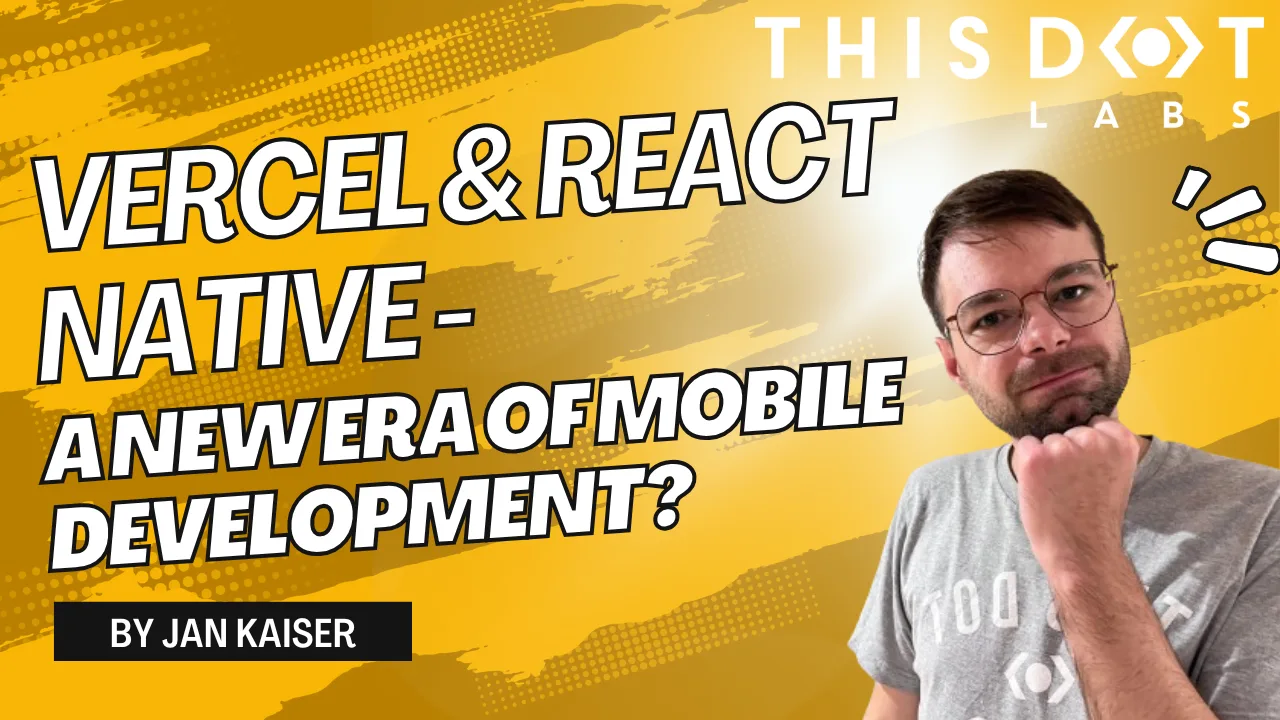Developer Insights
Join millions of viewers! Our engineers craft human-written articles solving real-world problems weekly. Enjoy fresh technical content and numerous interviews featuring modern web advancements with industry leaders and open-source authors.
![Quo v[AI]dis, Tech Stack? cover image](https://images.ctfassets.net/zojzzdop0fzx/28QIo74U7Nh8vFgxM7zrlJ/8b97153a1641a96380c6e9bfa32c1f95/Quo_v-AI-dis__Tech_Stack.png?fm=webp&w=3840&q=75)
Quo v[AI]dis, Tech Stack?
The article explores how AI is no longer just speeding up coding - it’s actively reshaping the choices we make as developers. From self-reinforcing loops around popular stacks like React and Node.js to AI-generated apps....
Aug 7, 2025
11 mins

The Quirks And Gotchas of PHP
Curious about PHP’s quirks? Discover how type juggling, loose comparisons, dynamic properties, and other oddities can trip you up—plus what’s changed in PHP 8 to fix (or introduce) new surprises....
Jun 20, 2025
6 mins

The Importance of a Scientific Mindset in Software Engineering: Part 2 (Debugging)
Part 2 of the “scientific mindset” series dives into the structured world of scientific debugging. Rather than relying on guesswork, we’ll explore how to form testable hypotheses to pinpoint and resolve software defects efficiently....
May 9, 2025
13 mins

Vercel & React Native - A New Era of Mobile Development?
With Fernando Rojo (creator of Solito) now leading mobile at Vercel, this article explores how Solito streamlines Next.js, React Native, and Expo for shared navigation, monorepos, and cross-platform components....
Apr 4, 2025
6 mins

Incremental Hydration in Angular
Incremental Hydration is coming to Angular. Have a sneak peak at the powerful feature that optimizes server-side rendering by keeping components dehydrated until triggered....
Mar 14, 2025
3 mins

The Importance of a Scientific Mindset in Software Engineering: Part 1 (Source Evaluation & Literature Review)
Discover how adopting a scientific mindset can transform your software engineering practice....
Jan 10, 2025
14 mins

Understanding the Difference Between `:focus` and `:focus-visible` in CSS
Understanding the Difference Between :focus and :focus-visible in CSS I have learned my fair share about the importance of keyboard accessibility, so I know that visual indication of the focused element is very important. But the well-known :focus pseudo-class is not always the best fit for this job. That's where :focus-visible comes in. Let's look at the differences between these two pseudo-classes and explore the best practices for using them effectively. What is the :focus Pseudo-Class? The :focus pseudo-class is a CSS selector that applies styles to any element that receives focus, regardless of how that focus was triggered. This includes focus events from keyboard navigation, mouse clicks, and touch interactions. Example Usage of :focus ` In this example, the button will display a blue outline whenever it is focused, whether the user clicks on it with a mouse, taps it on a touchscreen, or navigates to it using the keyboard. What is the :focus-visible Pseudo-Class? The :focus-visible pseudo-class is more specialized. It only applies styles to an element when the browser determines that the focus should be visible. This typically occurs when the user navigates via the keyboard or assistive technologies rather than through mouse or touch input. Example Usage of :focus-visible ` Here, the button will only show a blue outline when focused through keyboard navigation or another input method that usually requires visible focus indicators. Key Differences Between :focus and :focus-visible :focus - Behavior: Applies to any element that receives focus, regardless of the input method. - Use Cases: Ensures that all interactions with the element are visually indicated, whether by mouse, keyboard, or touch. :focus-visible - Behavior: Applies styles only when the focus should be visible, such as using a keyboard or assistive technology. - Use Cases: Ideal for scenarios where you want to provide focus indicators only to keyboard and assistive technology users while avoiding unnecessary outlines for mouse and touch users, typically required by design. Accessibility Implications :focus - Pros: - Guarantees that all users can see when an element is focused, which is critical for accessibility. - Cons: - Can lead to a suboptimal experience for mouse users, as focus styles may appear unnecessarily during mouse interactions. :focus-visible - Pros: - Enhances user experience by showing focus indicators only when necessary, thus keeping the interface clean for mouse and touch users. - Tailors the experience for keyboard and assistive technology users, providing them with clear visual cues. - Cons: - Additional considerations may be required to ensure that focus indicators are not accidentally omitted, especially in older browsers that do not support :focus-visible. - There may be cases where you want to show focus indicators for all users, regardless of input method. Best Practices for Using :focus and :focus-visible To achieve the best accessibility and user experience, combining both :focus and :focus-visible in your CSS is often a good idea. Combining :focus and :focus-visible ` Here is a Stackblitz example of what such styling could look like for you to try out and play with. Additional Tips - Test with Keyboard and Assistive Technology: Ensure that your web application is navigable using a keyboard (Tab, Shift + Tab, etc.) and that focus indicators are visible for those who rely on them. It's never a bad idea to include accessibility testing in your e2e testing suite. - Provide Clear Focus Indicators: Make sure that focus indicators are prominent and easy to see. A subtle or hard-to-spot focus indicator can severely impact accessibility for users who rely on keyboard navigation. Conclusion The :focus-visible pseudo-class offers a more refined way to manage focus indicators, improving accessibility and user experience, particularly for keyboard and assistive technology users. By understanding the differences between :focus and :focus-visible, and applying best practices in your CSS, you can create more accessible and user-friendly web applications. Remember, accessibility should never be an afterthought. By thoughtfully applying focus styles, you ensure that all users, regardless of how they interact with your site, can easily navigate and interact....
Nov 8, 2024
3 mins

Exploring Angular Forms: A New Alternative with Signals
In the world of Angular, forms are essential for user interaction, whether you're crafting a simple login page or a more complex user profile interface....
Oct 4, 2024
5 mins

How to Run End-to-End Tests on Vercel Preview Deployments
Learn how to run end-to-end (E2E) tests on Vercel preview deployments using GitHub Actions. This guide covers how to wait for deployments to be fully ready before executing tests, ensuring reliability and preventing false failures due to timing issues...
Sep 20, 2024
3 mins

SSR Finally a First-Class Citizen in Angular?
What’s the state of Angular SSR? And what’s happened to @angular/universal? This article explains!...
Jun 26, 2024
8 mins

Why is My React Reducer Called Twice and What the Heck is a Pure Function?
A short dive into an interesting issue we faced in a recent project: our React reducer was being called twice, causing unexpected behavior....
Jun 14, 2024
3 mins

Angular 18 Announced: Zoneless Change Detection and More
Overview of new features in Angular 18...
May 29, 2024
3 mins
Let's innovate together!
We're ready to be your trusted technical partners in your digital innovation journey.
Whether it's modernization or custom software solutions, our team of experts can guide you through best practices and how to build scalable, performant software that lasts.